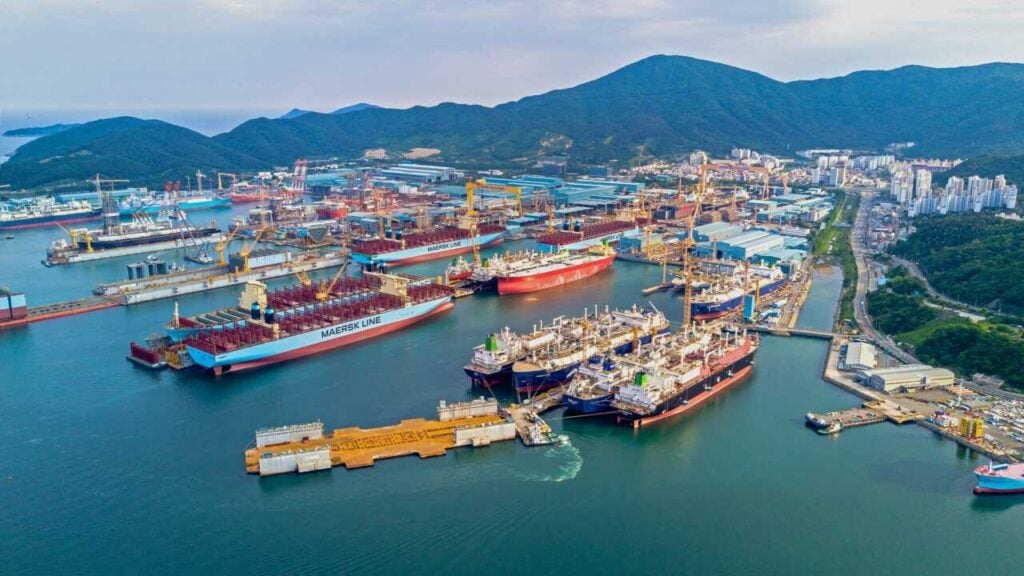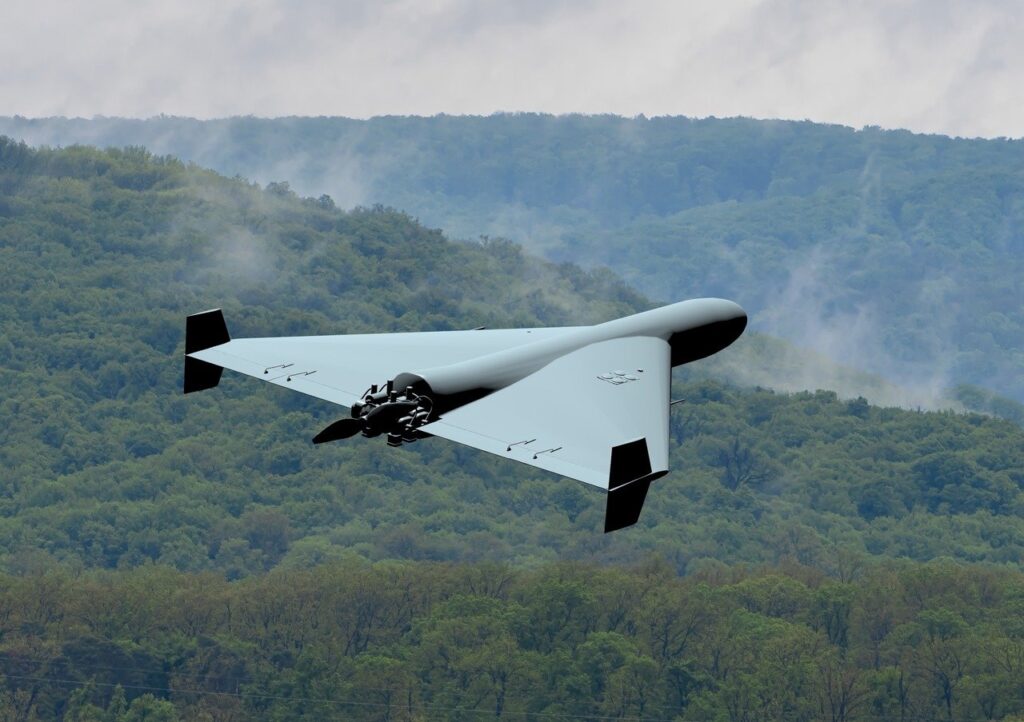
This U.S. Aircraft Carrier Fought Battleships, Picked up Astronauts and Fought MiGs
Many a ship has a remarkable tale to tell—but few have survived as many scraps as the aircraft carrier berthed at Pier 86 in Hell’s Kitchen, New York. The Intrepid (CV-11) and its sailors and aviators survived hits from four Kamikaze planes, helped sink the largest battleship ever built, recovered three astronauts from the sea and shot down a MiG jet over Vietnam.
The “Fighting I” was one of two dozen Essex-class fleet carriers that entered U.S. Navy service during World War II. The 266-meter-long flattops, which displaced twenty-seven thousand tons empty, were larger and boasted superior armor protection made possible by the termination of the Washington Naval Treaty in 1936. The carriers could accommodate the heavier combat aircraft entering service, such as the SB2C Helldiver, the TBF Avenger torpedo bomber, and Hellcat or Corsair fighters, and bristled with new air- and surface-search radars, up to seventy-two forty-millimeter Bofors air-defense guns, and even a dozen five-inch guns that could fire proximity-fused air-bursting shells. To top it off, the class featured a new port-side elevator to supplement the two center in-deck elevators, which could jam when hit.
Recommended: 1.2 Million Casualties: If North Korea Attacked Los Angeles with a Nuclear Weapon
These features demonstrated their value as the Intrepid was thrust into combat with Japanese forces in the Pacific War, a conflict spanning thousands of miles in which carriers proved to be the dominant weapon system. While a battleship might pot at targets a dozen miles away with its guns, a fleet carrier could launch one hundred aircraft at enemies hundreds of miles away. But that also meant carriers were a magnet for attack.
Recommended: North Korea Has 200,000 Soldiers in Its Special Forces
Sailing Into Port
The Intrepid launched from Newport News, Virginia in August 1943, after nearly two years under construction. After a shakedown cruise in the Caribbean, it began combat operations in January 1944. By then, U.S. forces were on the offensive, and the Intrepid’s initial mission was to support the island-hopping campaign towards the Japanese home islands by dispatching strike planes to bombard the Kwajalein Atoll in advance of a Marine amphibious landing.
Recommended: This Video Shows What Happens if Washington, D.C. Is Attacked with Nuclear Weapons
However, when Intrepid’s aircraft participated in a campaign targeting the major Japanese base at Truk, a torpedo launched by a Japanese B6N Tenzan (“Jill”) bomber blew out its stern, jamming the rudder during a turn to port. Capt. Thomas Sprague managed to counteract the turn by reversing the starboard screw and doubling the portside, and steered it home for repairs. But heavy winds threatened to blow the wounded carrier off course, so Sprague actually had the crew rig together an improvised sail out of hatch covers and canvas. Fixed to the forecastle, the sail helped the Intrepid limp into Pearl Harbor on February 24.
Seven months later, the Intrepid was patched up and back in action, providing air support for the bloody Marine landing in Peleliu. It soon would participate in the Battle of Leyte Gulf—the largest naval battle in history.
Intrepid vs. Japan’s Mega-Battleship
As a huge American force embarked to liberate the Philippines from Japanese occupation through amphibious landings in Leyte on October 17, 1944, the Imperial Japanese Navy sought to force a decisive naval battle through a three-pronged counterstroke, involving nine battleships, four carriers and nineteen cruisers.
On October 24, scout planes from the Intrepid sighted the largest of the groups, Admiral Kurita’s central force, including a massive Japanese warship. This leviathan was the Musashi—displacing seventy-two thousand tons, it was the largest battleship ever built, with three triple 18.1-inch gun turrets and armor ranging from thirty to sixty-five centimeters thick.
The carrier-on-battleship duel was on. Just two hours later, eight-ship Helldiver and Avenger squadrons from the Intrepid began harrying the mega-battleship. A bomb blasted its number-one turret, then a torpedo struck it amidship. Four of the Intrepid’s bombers were shot out of the sky in the blossoming bursts of sanshikidan beehive shells. The battleship began to list five degrees as it took on tons of water.
Strike planes from five additional U.S. carriers began descending upon the wounded Musashi, like vultures on a wounded beast. The Musashi was struck by an estimated nineteen torpedoes and seventeen bombs, and numerous other ships in the central force sustained heavy damage.
Kurita sailed his ships out of bomber range. But at 7 p.m., eleven hours after the Intrepid’s planes first spotted it, the super battleship finally capsized.
The notoriously reckless Admiral Halsey redirected the Intrepid and other U.S. carriers to give up on Kurita’s group to hunt another Japanese fleet including four aircraft carriers. But this Northern Force was actually intended as a suicidal decoy, as the hapless Japanese carriers mustered only 108 combat aircraft between them. The Intrepid’s air wing, along with the others in Task Force 38, swept away the paltry fighter screen and helped sink the carriers Zuihao and Zuikokou in the Battle of Cape Engaño. But meanwhile Kurita successfully doubled his fleet back through the San Bernardino Strait and nearly dealt a deadly blow to the lightly defended American landing force at Samar.
Kamikaze Terror
Just a few days later, the Intrepid’s crew experienced the horror of air attack themselves when a Japanese kamikaze plane rammed into a port flak position. The African American cooks manning the air-defense guns there kept on firing even as the fighter smashed into their position, killing nine.
Worse was to follow on November 25, when an A6M Zero smashed into it at noon. The resulting blaze was being brought under control when a second bomb-laden Zero made a beeline for the carrier, which evasively swerved to starboard. But the suicide attacker managed to weave through a barrage of flak and plunge through the flight deck, igniting a fire in the hangar below, an attack you can see here.
Around sixty-six died in the two attacks. The Intrepid had to evacuate its aircraft, and sail back to Pearl Harbor again for repairs. But the tireless carrier was back in action by February 1945, and starting in late March it was providing air support for the amphibious landing at Okinawa, one of the bloodiest battles of the Pacific campaign.
Again, however, the unlucky flattop was struck on April 16 by a fourth Kamikaze plane—the fuselage of which penetrated intact into the hangar below, killing eight and starting a gasoline fire that raged for three hours. For the third time, the American carrier had to retire to Pearl Harbor. However, its air wing was already back in action in August when Japan surrendered.
Astronaut Taxi Service
After World War II, the Intrepid was decommissioned in February 1947. But five years later, it received an extensive SCB-27C refit so that it could accommodate heavier, faster-flying F9F Cougar and F11F Tiger jets. Improvements included reinforcing the flight deck, installing new arrestor gear, increasing aviation fuel capacity, and trimming down and modernizing the antiaircraft armament. Most importantly, the Essex received U.S.-made steam catapults, and became the first carrier to use them operationally when it was fully recommissioned in October 1954.
Probably the Intrepid’s most exceptional role in the following years came from its involvement in the U.S. space program. On May 24, 1962, the Aurora 7 space capsule completed three rotations of the Earth in nearly five hours with astronaut Scott Carpenter on board. The capsule splashed down into the Caribbean just north of Puerto Rico—250 miles off course due to a pilot error and three-second delay in activating the retro-rockets. But land-based aircraft quickly spotted the capsule and dropped flotation devices and pararescue men. A few hours later, two HHS-2 helicopters from the Intrepid plucked the astronaut from the ocean.
On March 23, 1965, the Intrepid was again on duty to recover astronauts Virgil Grissom and John Young from Gemini 3, the first manned flight in a new program designed to pave the way for the Apollo moon landing. This time the capsule was merely forty-five miles short of target due to poor wind-tunnel models; the carrier again recovered the crew by helicopter, and the capsule by crane.
Skyraider vs. MiG
The Intrepid saw its second war when it deployed three times to Vietnam with Carrier Air Wing 10, which mostly comprised A-4 Skyhawk attack jets and F-8 Crusader swing-wing fighters. For its first deployment in 1966, it also carried VA-176, an attack squadron of huge, single-engine A-1H Skyraider propeller planes for close air-support missions, including rescue operations.
During one such rescue mission south of Hanoi on October 9, 1966, the four A-1s of Papoose Flight were bounced by an equal number of North Vietnamese MiG-17 fighter jets, which could fly twice their maximum speed.
While Cdr. Leo Cook and his wingman dodged the agile Soviet-made jets at low altitude over a misty Red River Delta, Lieutenants Tom Patton and Leo Russell and wingmen popped their aircraft over an intervening ridge and found themselves on the tails of the marauding MiGs. A burst from Patton’s four twenty-millimeter cannons set one of the Vietnamese jets ablaze, causing the pilot to bail out. This MiG-17 was the last enemy aircraft shot down by a U.S. propeller plane in combat. Russell also filed a probable claim for a second jet.
During Intrepid’s Vietnam deployments, twenty-one crew and aviators died in combat operations and accidents, and three of its fliers were taken prisoner.
The Intrepid wound down its operational career more peacefully with antisubmarine patrols before it was finally decommissioned again, in 1974. Though it was supposed to be scrapped like all but three of the other Essex-class carriers, former crew and philanthropists successfully lobbied for the battle-scarred carrier to remain active as a museum ship.
This is how it came to be berthed at Pier 86 in New York, where it hosts the Intrepid Air and Space Museum, which also includes numerous aircraft and the submarine USS Growler.
The Intrepid’s career as a museum ship has not been entirely uneventful. In 2006, it had to be pried free from thousands of tons of silty muck that had built up around its screws. Then in 2012, it received a decidedly unique addition to its “air wing”: the space shuttle Enterprise, towed there after landing at JFK.
Sébastien Roblin holds a Master’s Degree in Conflict Resolution from Georgetown University and served as a university instructor for the Peace Corps in China. He has also worked in education, editing, and refugee resettlement in France and the United States. He currently writes on security and military history for War Is Boring.
Image: Reuters
Recommended:
Why North Korea Is Destined to Test More ICBMs and Nuclear Weapons


